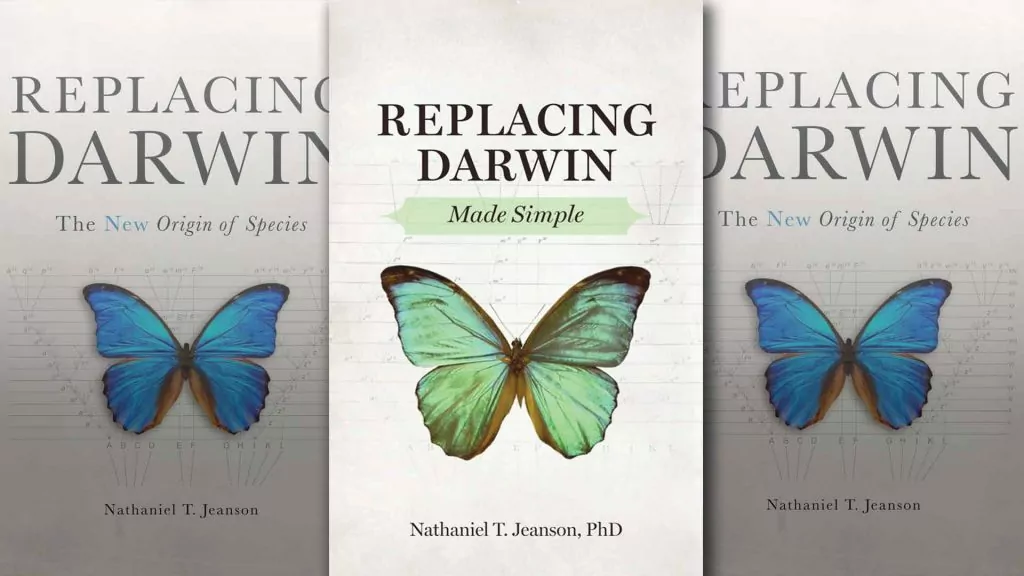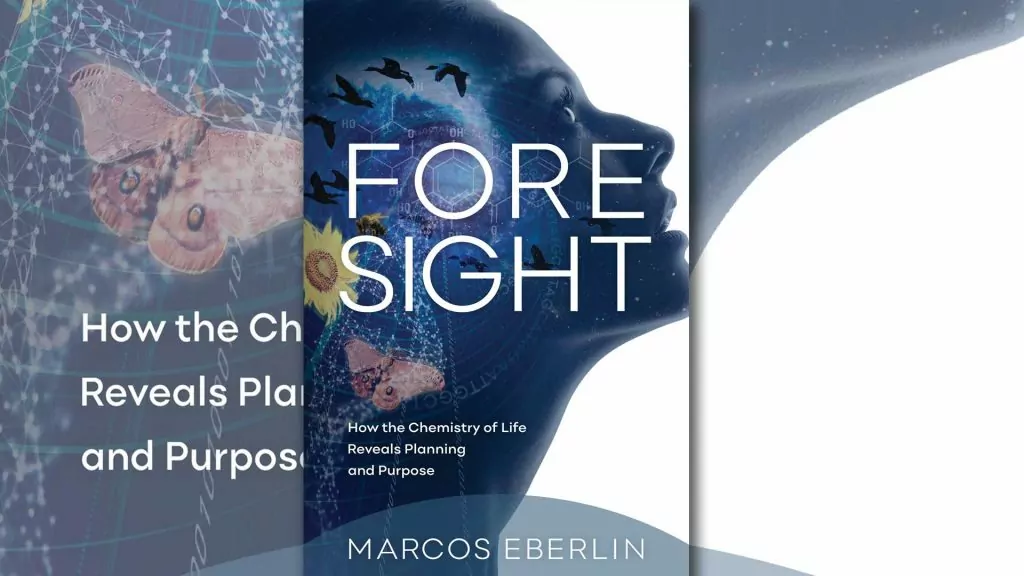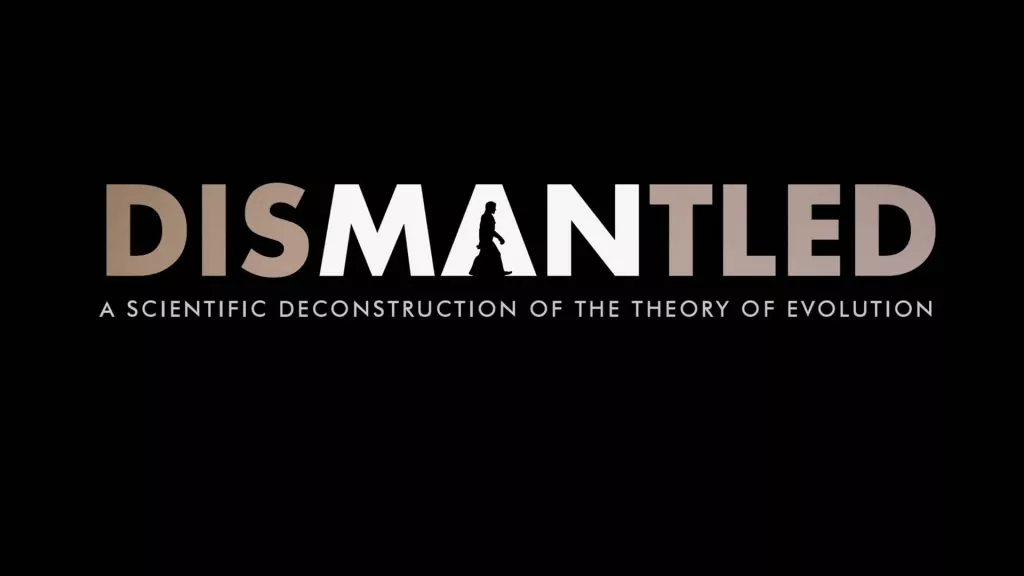Giraffe: nature’s gentle giants
This is Chapter 7 from Dr. Jerry Bergman’s new book Wonderful and Bizarre Life Forms in Creation which you can order at Creation Science Association of Alberta.
*****
Giraffes, the tallest living terrestrial animals on earth, are often called nature’s gentle giants due to their nonaggressive persona. Their most well-known trait is their long neck, longer than that of any living animal. Their 6-foot (1.8-meter) neck weighs about 600 pounds, more than the entire body of most animals. Their total height often reaches 20 feet and their weight 4,250 pounds. They are enormous animals.
Their legs alone are taller than many humans, about 6 feet. They can run as fast as 35 miles per hour (mph) over short distances, or trot at 10 mph for longer distances. Giraffes are favorite animals in many cultures, both ancient and modern, and are often featured in books, paintings, and even cartoons. This is not only due to its long neck but also to its very distinctive coat patterns. It looks like the paint called “crackled” that shrinks as it dries, leaving distinct patterns of cracks spread throughout the animal’s body.
For most young people, the giraffe is one of the most intriguing and exotic of all animals. It is so unusual, and in such contrast to other animals, that many people typically are more interested in it than many other fascinating creatures. In fact, the word “giraffe” is derived from the Arabic zerafa, a poetic variant of zarafa, meaning “lovely one” or “charming.”1 As one author noted, viewing a giraffe is one of humankind’s greatest visual experiences.2
The giraffe’s intelligent design
The giraffe’s entire body – both its anatomy and physiology – is tightly intertwined as a single functional unit.3 The giraffe is an excellent example of intelligent design that demonstrates special creation. Its neck alone is a wonder of enormously complex design that requires all necessary parts to be in their proper places before its neck structure is functional. As Charles Darwin said, it is a beautiful animal with “an admirably coordinated structure” of many parts in its neck.
Of interest, in The Origin of Species Darwin did not mention the giraffe’s neck as an example of evolution until the sixth edition, and then only in response to a critical review of his book by creationist St. George Mivart.4 In this work, it is clear that Darwin never regarded the giraffe’s long neck as central evidence of natural selection like biology textbooks that discuss evolution often imply today.
Another major problem with the standard textbook story is that Darwin accepted Lamarckianism later in his life. Lamarckian theory of acquired characteristics explained giraffe neck evolution by arguing that constant stretching slowly elongated their necks, and they then passed on their beneficial longer neck trait to their offspring.5 Darwin resorted to the idea that evolution occurs by use and disuse of body parts because he was unable to come up with a plausible theory that explained the origin of genetic variety that Natural Selection could select.6 Darwin knew that without a viable source of genetic variety, no evolution can occur and his theory was dead.
To produce a 6-foot-long neck from a short-necked animal (like evolution requires) necessitates hundreds or thousands of simultaneous, or nearly simultaneous, mutations – a set of events that has a probability of zero. It cannot just become longer, but requires a very different design than the less-than-one-foot neck that is common in most mammals.
The late Harvard professor Stephen Jay Gould said, “the long neck must be associated with modifications in nearly every part of the body – long legs to accentuate the effect, and a variety of supporting structures (bones, muscles, and ligaments) to hold up the neck.”7
The giraffe’s head and neck are held up by large powerful muscles strengthened by nuchal ligaments anchored by long dorsal spines on the anterior thoracic vertebrae. The giraffe’s neck vertebrae use an atlas-axis joint that allows the animal to tilt its head vertically and reach more branches with its tongue to obtain food. Giraffes require not only long necks to reach tall trees, but also long legs and even long faces and tongues (their tongues are over a foot long) to reach the high growing acacia leaves they favor.
One major problem for Darwinists is how natural selection simultaneously altered necks, legs, tongues, prehensile lips, knee joints, muscles, and complex nervous system and blood-flow control systems to control the pressure necessary to pump blood from the heart up to the giraffe’s distant brain. The common explanation of the giraffe’s long neck is that it was not produced by gradual evolution but instead mistakes called mutations produced it.8
To eat grass or drink water, because they are the tallest animals in the world, giraffes must move their heads to a point seven feet below their heart and, when upright, to a point about eleven feet above it. When the giraffe puts its neck down to drink, one would expect blood to rush into its head. Then when he raised his head after drinking, the blood flowing away from its head should cause it to faint.
But a system of ingeniously designed reservoirs and valves inside its arteries prevents this from occurring. Its strong heart beats 150 times per minute. A spongy tissue mass below the brain helps to regulate blood flowing to the brain to ensure that rapid pressure changes are blunted.9 When water is available, giraffes drink regularly from ponds and streams. But during a drought, they can survive very well without water for several weeks at a time because they can satisfactorily obtain their needs from plants.10
Giraffes are an Icon of Evolution
One of the more common icons almost universally presented as proof of evolution is giraffe evolution. It is used in high school and college biology, anthropology, and evolution texts. Science “has made giraffes the very symbol of evolutionary progress.”11 So important was this icon that Francis Hitching titled his critique of Darwinism “The Neck of the Giraffe” (1983). A survey of all major high school biology textbooks found “every single one – no exceptions – begins its chapter on evolution by first discussing Lamarck’s theory of the inheritance of acquired characters,” then presenting Darwin’s theory of natural selection as the correct alternative to Lamarck’s theory.12
As a result, the “classic textbook illustration of our preferences for Darwinian evolution... an entrenched and ubiquitous example based on an assumed weight of historical tradition that simply does not exist.”13 Thus, this example teaches evolution by use of “a false theory,” and thus is a false icon.14 A typical explanation for the evolution of the giraffe’s long neck is that some giraffes, purely by chance,
were born with fortuitously slightly longer necks, and that this conferred upon them a selective advantage enabling them to reach higher branches in times of famine and drought, which greatly improved their chances of surviving and leaving offspring similarly endowed with longer necks. Such a process repeated over many generations would inevitably lead to the long neck of the modern giraffe.15
The giraffe’s neck is used to illustrate how natural selection gives more variety within a population. In any group of giraffes, there always exists variation in neck length, as is true of any trait. Consequently, the theory postulates when their food supply is adequate, the animals do quite well, but when food is inadequate,
giraffes with longer necks have an advantage. They can feed off the higher branches. If this feeding advantage permits longer-necked giraffes to survive and reproduce even slightly more effectively than shorter-necked ones, the trait will be favored by natural selection. The giraffes with longer necks will be more likely to transmit their genetic material to future generations than will giraffes with shorter necks.16
The problem with this theory is that it is not just a matter of stretching the neck. Rather, giraffes require an entirely new design.
WHAT IS LAMARCKIANISM? Larmarckism or Larmarckianism is a theory of evolution named after Jean-Baptiste Lamarck. He believed that characteristics that an animal organism acquired during its lifetime could be passed on to its offspring. It’s the idea that if a man started working out and getting huge muscles, his offspring would have bigger than normal muscles too, even without working out. It is also the idea that if a giraffe managed to stretch out its neck by reaching for those leaves on those tallest branches, its offspring would be born with longer necks.
Long neck essential for its lifestyle
The giraffes’ long necks are critical in allowing these long-legged animals to rise from a lying position. They use their neck to shift their weight, allowing them to stand on their long legs. It is also critical in climbing and running, which involve snake-like, slithery movements that propels their entire body forward. The long, thin giraffe neck provides a great deal of surface area, which is also important for effective body cooling. For this reason giraffes – in contrast to many other large mammals that live in warm temperate areas – can remain in the hot sun for long periods of time.
Darwinists give reasons why giraffes evolved their long necks which include for mating, for defense, for thermoregulation, to facilitate their fast-forward travel (up to 30 mph), or for one of many other reasons, but it is a poor icon for their theory. They propose that the giraffes’ long necks evolved for all of these reasons – or none of them. As Gould concludes, “The giraffe’s neck cannot provide a proof for any adaptive scenario, Darwinian or otherwise.”17 The giraffe’s neck is far more useful as an example of the many problems with Darwinism.
Common claims of giraffe neck evolution fail
The typical textbook story is that giraffes evolved long necks to reach the leaves located “at the tops of acacia trees, thereby winning access to a steady source of food available to no other mammal.”18 Some question why the trees did not evolve to become taller to prevent the giraffes from consuming their leaves.
Although now an icon for Lamarck’s mechanism of evolution, Lamarck presented no evidence for this interpretation but rather only “a few lines of speculation.”19 His reference to giraffes in his classic work consists of only one paragraph based on zero data.20 Lamarck also wrongly claimed that the animal’s forelegs evolved to become longer than its hind legs, indicating that Lamarck was not familiar with the literature on this animal.21
Why giraffes are used to support Darwinism
A major reason that the giraffe example is used to support evolution is because it is an easy illustration of Darwinism by artwork or photographs.22 Virtually all textbooks picture giraffes eating from acacia trees, incorrectly implying that its leaves are the main staple of their diet. So “appealing is this hypothesis that students of giraffe behavior and evolutionary biologists alike accept it.”23
Although the tall acacia tree leaves may be a preferred food source, giraffes will graze on many other tree and bush types. Plentiful foliage exists at the lower-levels of the tree, and giraffes also commonly consume grass and low bushes and many kinds of ground-growing plants.24 Female giraffes are, on average, about a meter shorter in height than males – and they survive quite well.
If leaves at higher levels are a large unexploited niche, then why have not many other animals, such as antelopes, also evolved the same long neck as giraffes have?25 One could argue that giraffes with shorter necks could thrive better because most of the foliage in the part of Africa where they live is near the ground, and it would be a decided survival advantage to be closer to the more plentiful ground vegetation compared to the comparatively rarer acacia tree leaves.26 All young giraffes feed on grass and bushes until their neck has grown long enough to reach the trees, usually at 3 to 4 years of age. The females spend over half their time feeding with their necks horizontal, indicating that their neck’s length may actually be a handicap.
The giraffe diet is extremely varied. Generally, they are browsers, feeding by plucking leaves with their 17-inch tongue. Or they will grab a tree branch, put it into their mouth, and pull off leaves by twisting their heads. The over 100 plant species in the giraffe’s diet include
flowers, vines, herbs, along with an occasional weaver-bird nest. If there are chicks in the nest, the giraffe eats them too, gaining some extra minerals from their bones. Giraffes also get minerals by gnawing on the bones of animals killed and left by hyenas and other predators.27
Other problems with the Darwinist textbook story
One common theory is that the long neck evolved to aid in mating. The chief adaptive reason for evolving long necks could be sexual success “with a much-vaunted browsing of leaves as a distinctly secondary consequence.”28 The longer neck enables males to perform their ritual dominant battles called “necking.”29 The intrasexual competition theory assumes that “necking” behavior evolved first, then the neck length evolved due to sexual selection.
Other evolutionists suggest that giraffes’ long necks evolved to function as look-out towers to spot potential predators. This, coupled with giraffe’s excellent vision, enables them to spot a lion as much as a mile away. The problem with this theory is giraffe’s have virtually no enemies – lions are the only wild animal that usually attacks them, but only when desperate.30 A lion is little match for a 2,000 to 4,000-pound giraffe. A giraffe hoof can kill a lion with a single blow.
The giraffes’ best defense is not their necks, but it is their long legs and heavy hooves that are deadly to enemies. They defend themselves primarily by kicking. This theory may explain their long legs, but not why they evolved long necks. The legs could have evolved first to allow them to run from carnivores, then the neck grew so that the giraffe could stretch down to eat grass and drink water. The problem with this scenario is long legs do not always give the giraffe an advantage to outrun predators. Many of the fastest animals have legs far shorter than a modern giraffe’s.
Fossil evidence for giraffe evolution lacking
Much controversy exists about giraffe evolution, partly because no empirical evidence of giraffe evolution exists. Without any evidentiary constraints, scientists are free to speculate. As a result, they have tried to link giraffes to a variety of often very dissimilar animals.31 About a dozen giraffe (Giraffa camelopardalis) types are recognized. They are plentiful in the fossil record, and their bones have not changed much, if at all, in shape or size since giraffes first appeared in the record. The extant fossil record evidence leads to the conclusion that giraffes have been unchanged, by evolutionary reckoning, for about two million years.32 Furthermore, the fossil evidence that does exist “provides no insight into how the long-necked modern species arose.”33
Except that they are greatly elongated, the seven giraffe cervical vertebrae and leg bones are about the same number and are very similar to those of virtually all mammals.34 If giraffe neck and leg elongation occurred in evolution, then this should be obvious in the fossil bones. Yet no fossils supporting their neck evolution have ever been discovered. Savage and Long conclude that the origin of all three of the mainpecorans (giraffes, deer, and cattle) lineages “remains obscure” due to the total absence of relevant fossil evidence.35
Although some estimate that there exist approximately 50 extinct giraffe species, all are known from fossils extending back to the Miocene, estimated by evolutionists to be 17 million years ago. In spite of considerable effort, none of these show evidence for giraffe evolution. After unearthing millions of fossil bones, paleontologists have not located evidence for giraffe neck elongation, or any transitional stages. As Danowitz documents “the giraffe neck has been adequately researched” which has confirmed that “osteological demonstration of the fossils and evolutionary transformation of the neck is lacking.”36
Summary
In conclusion, we agree with Gould that the standard giraffe evolution story “in fact, is both fatuous and unsupported,” and the existence “of maximal mammalian height for browsing acacia leaves does not prove that the neck evolved for such a function.”37 Gould’s major concern about this case is, “If we choose a weak and foolish speculation as a primary textbook illustration (falsely assuming that the tale possesses a weight of history and a sanction in evidence), then we are in for trouble – as critics properly nail the particular weakness, and then assume that the whole theory must be in danger if supporters choose such a fatuous case as a primary illustration.”38 We critics have nailed, not only this major weakness in Darwinism, but also its many other weaknesses and outright incorrect conclusions.
This is Chapter 7 from Dr. Jerry Bergman’s “Wonderful and Bizarre Life Forms in Creation” Each of the 23 chapters examines a different animal or creature, so if you liked this, you can order the book at the Creation Science Association of Alberta.
References
1 Allin, M. 1998. Zarafa: A Giraffe’s True Story, From Deep in Africa to the Heart of Paris. New York: Walker and Company, p. 5.
2 Burton, M. and R. Burton. 1969. Giraffe. The International Wildlife Encyclopedia, Volume 7. NY: Marshall Cavendish, p. 885.
3 Davis, P. and D. Kenyon. 1993. Of Pandas and People; The Central Question of Biological Origins. Dallas, TX: Haughton; Brantley, G. 1994. A Living Skyscraper. Discovery. 5: 26. April.
4 Spinage, C.A. 1968. The Book of the Giraffe. London: Collins.
5 See J. B. Lamarck’s English translation. 1914. Zoological Philosophy. Translated by Hugh Elliot. London, England: Macmillan, p. 122.
6 Gould, S. J. 1998. Leonardo’s Mountain of Clams and the Diet of Worms: Essays on Natural History. NY: Harmony Books, p. 312.
7 Gould, ref. 6, p. 309.
8 Sherr, L. 1997. Tall Blondes, A Book About Giraffes. Kansas City: Andrews McMeel, p. 40.
9 Hofland, L. 1996. Giraffes; animals that stand out in a crowd. Creation. 8 (4): 11-13.; Davis, P. and D. Kenyon, 1993. Of Pandas and People: The Central Question of Biological Origins. Dallas, TX: Haughton Pub. Co.
10 Peterson, D. 2013. Giraffe Reflections. Berkeley, CA: University of California; Dagg, A. 2014. Giraffe: Biology, Behaviour and Conservation. NY: Cambridge University Press.
11 Sherr, ref. 8, p. 40.
12 Gould, ref. 6, p. 302.
13 Gould, ref. 6, p. 302.
14 Gould, S. J. 1991. Bully for Brontosaurus. NY: Norton, p. 166.
15 Denton, M. 1986. Evolution: A Theory in Crisis. Bethesda, MD. Adler and Adler, pp. 42-43. Emphasis added.
16 Kottak, C. P. 2000. Anthropology: Exploration of Human Diversity. NY: McGraw-Hill, p. 166.
17 Gould, ref. 6, p. 317. Emphasis added.
18 Gould, ref. 6, p. 303.
19 Gould, ref. 14, p. 166.
20 Sherr, ref. 8, p. 41.
21 Gould, ref. 6, p. 306.
22 Hoagland, M., B. Dodson, J. Hauck. 2001. Exploring the Way Life Works: The Science of Biology. Sudbury, MA: Jones and Bartlett.
23 Simmons, R. E. and L. Scheepers. 1996. Winning by a neck: sexual selection in the evolution of giraffe. The American Naturalist. 148(5):771-786. p. 771.
24 Burton and Burton, ref. 2.
25 Gould, ref. 6.
26 Spinage, ref. 4.
27 Allen, T. 1997. Animals of Africa. Washington DC: Levin, p. 86.
28 Gould, ref. 6, pp. 317-318.
29 Sherr, ref. 8, p. 42.
30 Simmons and Scheepers, ref. 23.
31 Dagg, A. I. and J. Bristol Foster. 1976. The Giraffe: Its Biology, Behavior and Ecology. NY: Van Nostrand Reinhold.
32 Sherr, ref. 8, p. 42.
33 Gould, ref. 6, p. 315.
34 Gould, ref. 6, p. 309.
35 Savage, R. G. and M. R. Long. 1986. Mammal evolution. NY: Natural History Museum, p. 228.
36 Danowitz, M. et al. 2015. Fossil evidence and stages of elongation of the Giraffa camelopardalis neck. Royal Society Open Science 2: 150393. See also Danowitz, M., R. Domalski, N. Solounias. 2015. The cervical anatomy of Samotherium, an intermediate-necked giraffid. Royal Society Open Science. 2: 150521.
37 Gould, ref. 6, p. 318.
38 Gould, ref. 6, p. 314....








